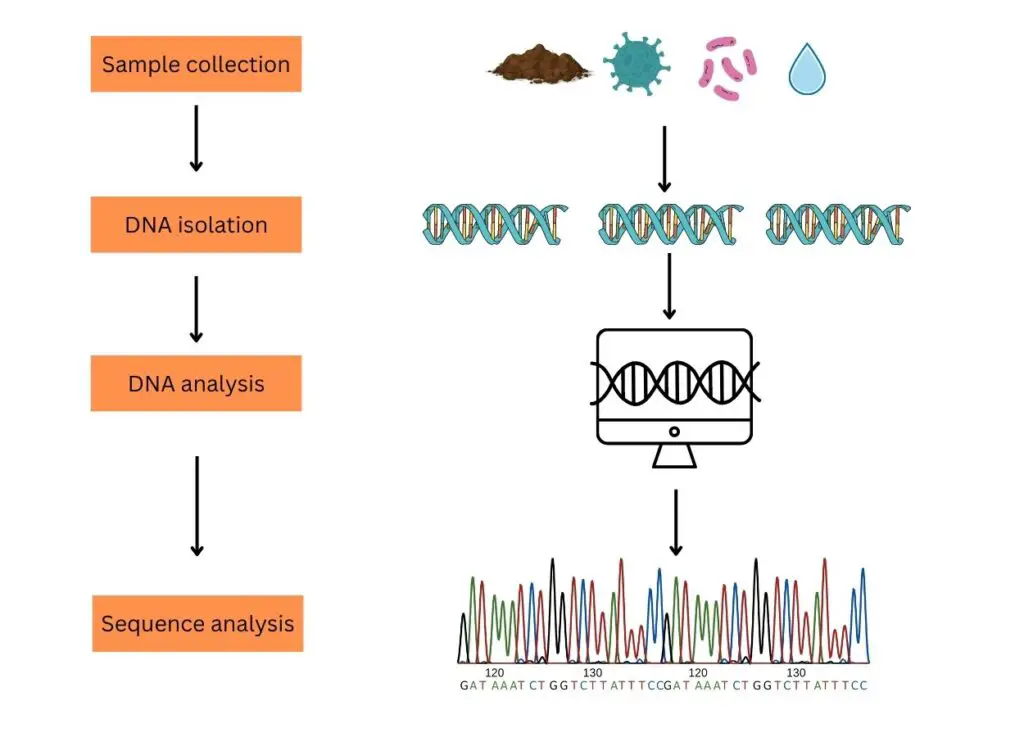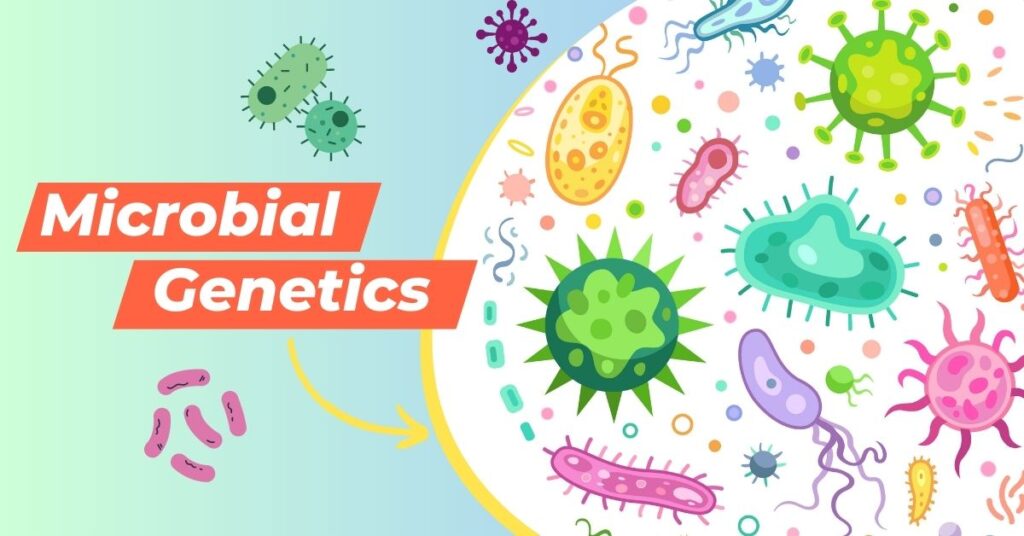“This article explains why microbial genetics is superior to conventional microbiology and sheds light on its advantages and applications. Read on to discover the exciting potential of this rapidly evolving field.”
Microbiology is a traditional and conventional discipline of science. It particularly studies microbes around us. In 1670, Antonie van Leeuwenhoek studied microorganisms using his own microscope. Afterward, the discipline came to light in the early 19s.
Put simply, the fields basically focus on the five “I’s”– Inoculation, incubation, isolation, inspection and identification. Techniques used in conventional microbiology are applied to study microbes but have limitations.
Some common shortcomings are contamination risk, lack of precision and accuracy, time-consuming procedures and lack of automation.
A recently emerged subdiscipline– microbial genetics, is more advantageous over conventional microbiology procedures. In particular, it can study complex microbial populations with great precision.
Microbial genetics is a powerful tool for studying microbes, their diversity, evolution, function and interaction, and providing unprecedented insight into the world of microbes.
In this article, we will compare conventional microbiology and microbial genetic techniques and will prove why the microbial genetic field would be the future of microbiology and microbe studies. To support the present notion, we will also discuss some of the amazing applications of microbial genetics as well.
At Genetic Education Inc., we aim to re-discover knowledge and present it in a more engaging manner. This article is a wake-up call for students to shift their focus toward microbial genetics and prioritize their learning over traditional microbiology.
Let’s start the article.
Related article: Metagenomics Made Easy: Streamlining DNA Extraction With Bead Beating.
Key Topics:
What is microbial genetics?
Microbial genetics is an interdisciplinary field of (we can say) microbiology or genetics that deals with the study of microbes at a molecular level. It can study the genetics and/or genomics of microbes including viruses, bacteria, fungi, protozoans, etc.
All the investigations are carried out at either DNA or RNA level (molecular level) and thus are safer, faster and more accurate. It can also perform gene expression studies and complex microbial analysis.
Genetic techniques such as PCR, qPCR, restriction digestion, sequencing and microarrays have been applied for microbial genetic investigations. The metagenomic analysis is a great example showing how these techniques can solve the complex microbial puzzle.
Microbial genetic procedure:
Sample collection: Any sample we wish to study is first collected. It might be any host sample, environmental sample or even microbial culture. The sample must be safely handled and transferred to the lab.
Nucleic acid Isolation: Routinely, DNA isolation is performed to collect DNA fragments present in the sample. Ready-to-use kits and automated robotic systems are available to isolate DNA or RNA. Quality and quantity assessment is also carried out.
Processing: Now the DNA can be processed depending on the requirement of the assay. Downstream assays like PCR, qPCR, and DNA sequencing and microarray techniques are commonly used here.
Results and analysis: The data are collected and results are analyzed using computer programs. Sequence analysis, sequence comparison, functional analysis and structural modeling are common practices for microbial studies.
A brief overview is given below.

Comparison– Microbiology vs microbial genetics:
Microbial isolation, inoculation and culture are common practices in conventional microbiology while DNA/RNA isolation and analysis are common practices in microbial genetics.
Conventional microbiology techniques rely on a culture-based approach. Here, the sample is cultured using a media in lab conditions, however, the vast majority of microorganisms can not be cultured, studies suggest. Thus it restricts us to study and understand microbial diversity and functions.
Contrary, microbial genetics directly study the DNA/RNA sequence of any microorganism present in the sample. It gives us the strength to understand the complex microbial diversity and thereby their functional importance.
Recently evolved metagenomic techniques discovered novel microorganisms which were previously unknown. Note that the metagenomic technique uses the DNA sequencing platform to study microorganisms.
To understand the structural and functional importance of every microbe, it is important to isolate and study individual microorganisms. Unfortunately, it is difficult to isolate and study individual microorganisms using conventional microbiology techniques which lack accuracy.
In contrast, microbial genetic techniques can isolate and study every microorganism present in the sample, separately with great precision and accuracy.
Culture-based techniques require approximately 48 to 72 hours to obtain great culture or microbial colonies. Thus it’s time-consuming. On the other hand, molecular genetic techniques are so rapid and done analysis in a short time. The approximate time from DNA extraction to analysis is around 1 day.
One of the major limitations of conventional microbiology techniques is that they can not distinguish microorganisms based on their functions. But microbial genetics can perform functional analysis by targeting a gene, encoded protein, and function.
The culture-based approach in microbiology grows microorganisms in a lab environment, but it may result in the loss of some or even a significant portion of the diverse population that cannot be cultured. On the other hand, microbial genetics techniques involve growing microorganisms solely in their natural environment. This approach allows for the study of diverse and rare microbial populations, making it more effective than the culture-based method.
Yet another biggest disadvantage of microbiology techniques is the risk of contamination. Strict aseptic conditions are required to culture and grow microorganisms otherwise, other undesired microbes can contaminate the culture.
Genetic analyses are safer and less prone to direct microbial contamination. Once the DNA/RNA is isolated, it is safe to use further.
Automation is an important requirement in any industry in recent times. Unlike genetic analysis, conventional microbiology lacks automation. Starting from culture to analysis, every step is performed manually.
Microbial genetic analysis is almost automated. From extraction to sequencing, every step is performed in a machine. Automation gives it speed, precision, accuracy and power to analyze multiple samples.
In addition, due to the lack of automation, more skilled and experienced manpower is required in a traditional microbiology lab while less manpower is required in a microbial genetic lab.
Microbial genetics is faster and more accurate than traditional microbiology because it uses computer software to analyze data. Microbiology, on the other hand, relies on human expertise, such as using a microscope to view microorganisms.
The important benefit of genetic analysis over conventional microbiology is safety. As culture-based approaches deal with live microorganisms, oftentimes, the lab personnel may get any unwanted and unknown infection.
The entire procedure starting from isolation to analysis is prone to infection here. Genetic analysis has minimal risk of getting any infection. Once DNA is isolated, it’s safer to proceed.
In conclusion, new-age microbial genetics is more powerful, rapid, accurate and automated techniques compared to conventional microbiology techniques. Now take a look at some of the lucrative applications of it.
Applications of microbial genetics:
Microbial genetic techniques are helpful in the identification, classification and functional microbial analysis. In addition, it also helps to study diversity and find novel microbes.
Identification:
Microbial genetics can identify microorganisms at species, strains or sub-strain levels. A technique known as DNA fingerprinting is utilized for the identification purpose which preliminary uses the 16S rRNA gene as a genetic marker for analysis. Notedly, the 18S rRNA gene marker is also used.
Read this article to learn more: 16S rRNA gene sequencing.
Classification:
It can also classify microorganisms based on their genetic characteristics– sequence similarities and diversity and group them.
A unique DNA sequence, which is partly common and partly ‘highly diverse’ among different microbes is analyzed. This sequence is a 16S rRNA gene sequence, a unique and common marker for the classification of microorganisms.
Characterization:
Microbial genetics can also study unique microbial characteristics such as virulence, antibiotic resistance and various microbial metabolic pathways using genetic analysis. Genetic factors governing each trait can be studied separately or in combination, for characterization.
Characterization often requires tedious computation analysis and dry lab work.
Diversity studies:
The important application of the present sub-discipline is in the study of microbial diversity. A plethora of microbes are still unknown to us. Techniques like metagenomic shotgun sequencing are capable enough to sequence every microbial sequence present in the sample.
Such techniques help investigate a huge diversity of microorganisms present in any environment, ecosystem or host.
Novel finding:
The most crucial application of microbial genetics is that it is capable enough to identify and classify novel pathogens and microorganisms present in the sample. Scientists have identified 500 to 1000 new gut microbial species using this technique.
Antibiotic-resistant studies:
Genetic techniques are capable enough to study an antibiotic-resistant gene at a sequence level, determine any new sequence alterations, help to identify antibiotic-resistant and develop new antibiotics against newly evolved strains.
Infection studies:
Besides, molecular-level studies also allow us to study various infections, their spread and outbreak. And is used in disease studies and diagnosis.
Read more: 15 Mind-Blowing Facts About Microbes Revealed By Metagenomics.
Wrapping up:
In conclusion, while microbial genetic techniques have demonstrated superiority over conventional microbiology analysis, there is still a lack of structural and functional information available for many microorganisms.
Additionally, the study of novel strains and microbes is currently limited. However, these limitations are expected to be overcome in the near future.
This article serves as a call to action for microbiologists to shift their expertise from conventional methods to more advanced techniques such as sequencing and PCR, which provide a wealth of data for analysis.
It is important to note that this article does not intend to discredit microbiology, but rather to emphasize the importance of adopting more advanced techniques in the field. All subjects are equally respected, and it is hoped that this article will be beneficial to readers.
Sources: Del Duca, Sara et al. “Microbial Genetics and Evolution.” Microorganisms vol. 10,7 1274. 23 Jun. 2022, doi:10.3390/microorganisms10071274.



